Mackinac Island has been a popular tourism site since the 19th century. Prior to that time it was a center for the fur trade with the Native Americans. John Jacob Astor made his fortune here.
This was the beginning of our time-zone tango. Over the course of the cruise we bounced back and forth between Eastern Daylight Time (Virginia), Central Daylight Time (Chicago), EDT (Mackinac Island & the Upper Peninsula), CDT (Duluth), EDT (Thunder Bay & Sault Ste. Marie), CDT (Green Bay), EDT (Muskegon), CDT (Chicago), and finally back to EDT at home. That's eight clock changes in 14 days! We were never quite sure what time it was.
Since we had visited Mackinac on our earlier Great Lakes excursion, I branched away from the standard tourist offerings. I walked along the cobble beach, climbed up to Pontiac's Trail & the West Bluff, walked past the Grand Hotel, and made my way to church for the Sunday service.
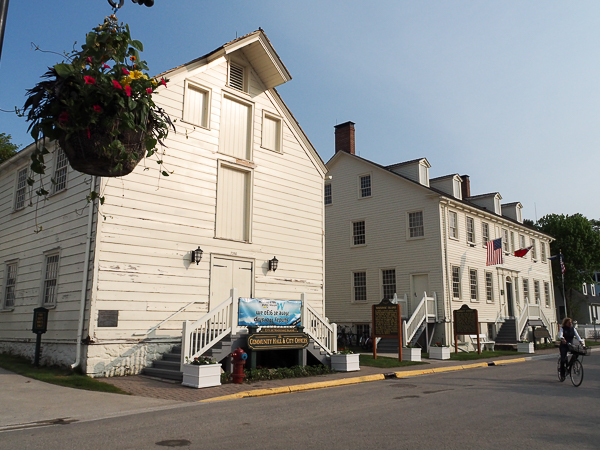
These two buildings were the warehouse of John Jacob Astor's American Fur Company and residence of the company's agent, Robert Stuart. The buildings date to around 1814, but were restored as the community hall (L) and the Stuart House Museum (R) in 1967.
Astor founded a fur-trading empire that reached as far as the Pacific coast (Astoria, Oregon, is named after him). As the fur trade declined, he got out and invested in New York real estate. He died as possibly the richest man in modern history with a personal fortune estimated as much as $1 trillion in 2024 dollars.
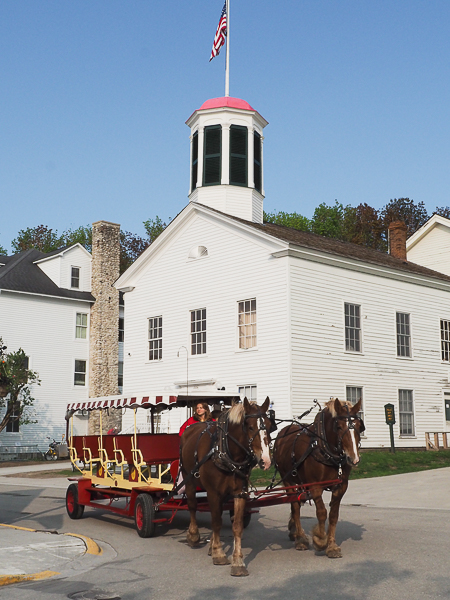
The 1839 courthouse building now houses the police station. The police have one of the few automobiles allowed on the island. All other transportation is by horsepower, bicycle, or shank's mare. Snowmobiles are popular in winter when the horses are exiled to the mainland.
There is also an ambulance and a fire truck.
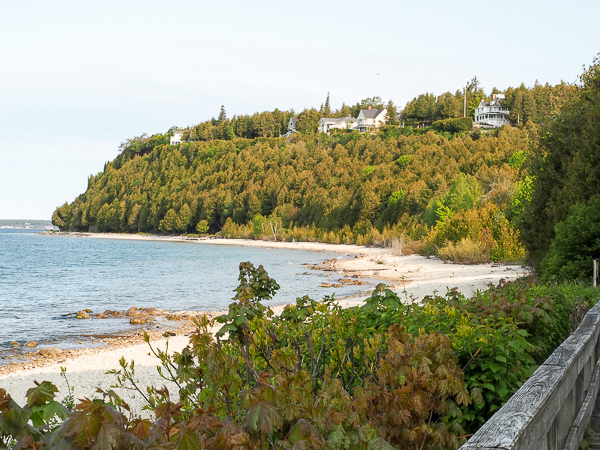
The Lakeshore Boulevard to the Mackinac Island State Park boundary travels beside cobbled beaches and in the edge of the forest. Where the road leads into the park, there is a 205 step stairway up the west bluff to "Pontiac's Trail."
The trail is named in honor of the Odawa leader Pontiac, who coordinated a rebellion against the British after their victory in the French and Indian war, part of the continental European Seven Years' War. Many Native American groups had good relations with the French who did not encroach as much on their territory and were deemed fairer traders.
Although the fort on Mackinaw Island was attacked, with much of the garrison massacred, Pontiac himself was never here.
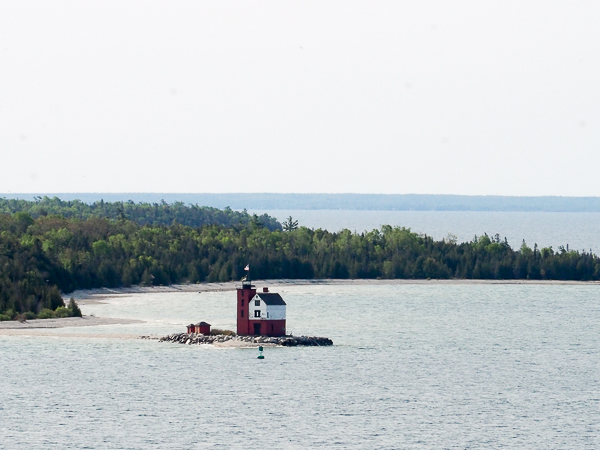
Once I reached the top of the long staircase, the views were expansive.
Pontiac's trail ran along the ridge and provided a great place for capturing a variety of plants. Check out the link to see some of them.
The Round Island Light is one of two marking the harbor. Interior pictures are available at the link. It's pretty rough on the inside.
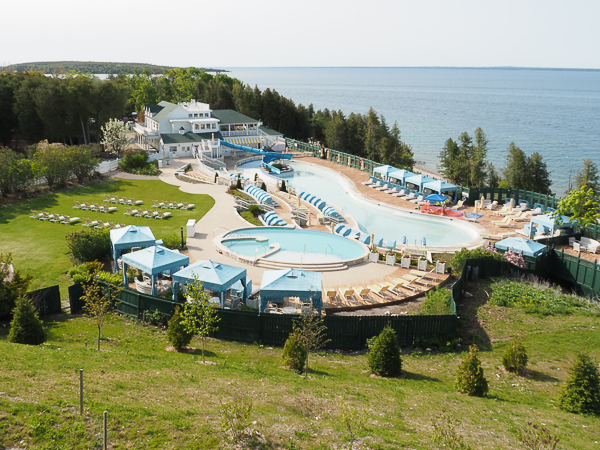
As I began to make my way to the church, I passed the Grand Hotel. Its swimming pools are certainly grand.
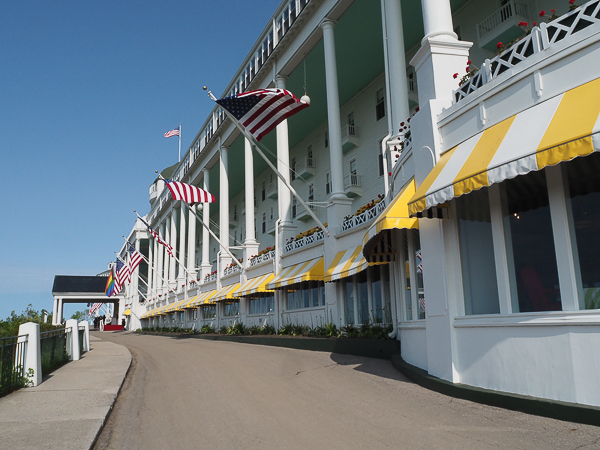
And the hotel famously has the longest porch in the world. This is less than half of it.
I was amused that they charge $12 just to go inside and look around. Then again, they don't want their big-paying guests to be overrun by the hoi polloi.
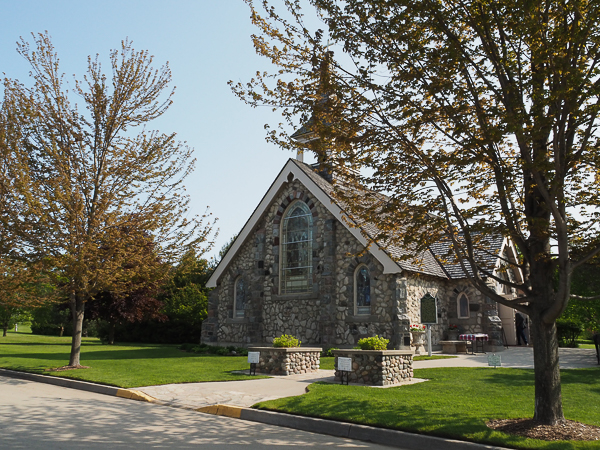
The Little Stone Church, officially known as Union Congregational Church, was my goal this Sunday morning. It was the closest thing to Presbyterian that I could find. The service was quite nice and the people friendly. I met one man who was a fifth-generation Mackinac islander, although he spends winter on the mainland nowadays. His grandfather was one of the founders of the church.
They seem to do a land-office business in weddings.
In addition to singing, the music director played the organ, piano, and harp.

This window features Presbyterian missionary William Ferry, who established a school for Native American children in the Island's Mission House in 1825.
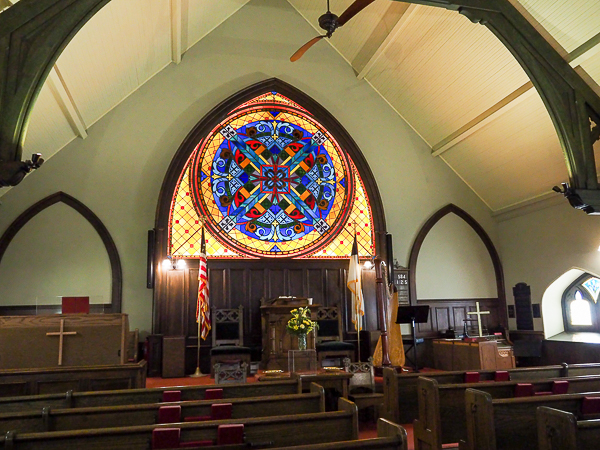
I took this picture of the rose window before the congregation arrived. The church was quite full by the time the service started.
The harp can be seen to the right of the pulpit.
I also like the ceiling fans.
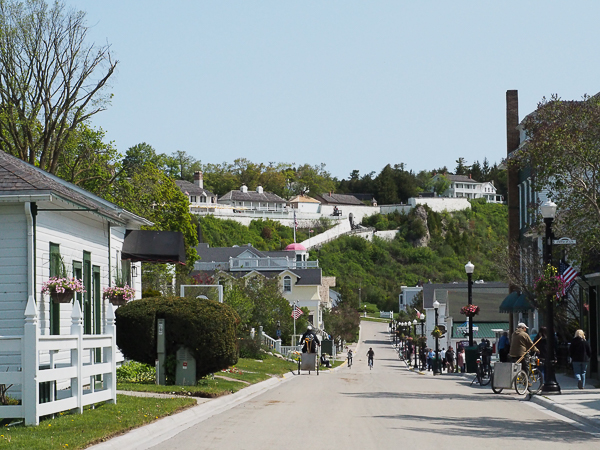
The view down one of the main streets toward Fort Mackinac. Originally built by the British, it is one of the few surviving Revolutionary War forts (it was held by the British) and one of the most complete early forts in the country. We visited it on our prior excursion to the island and it was fascinating -- even in the rain.

For our "immersive" experience, we signed up for a fudge-making demonstration.
Mackinac Island has been associated with fudge since the 19th century and now produces around five tons a day during the season. Our excursion took us to the Mission Point Resort where we attended a session with executive chef John Clements.
He made a batch of fudge the old-fashioned slow way -- without a marble slab, which he says is pure theatre. Instead he makes his fudge in a bowl set in ice. Ingredients include sugar, salt, half & half, butter, vanilla, baker's chocolate, and other ingredients depending on your creativity.
We never got to try his end result because he said it needed to cool and set up more.
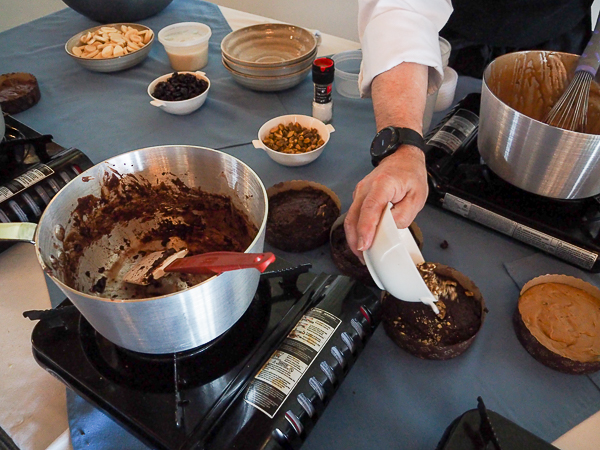
Our recipe, on the other hand, was much simpler: chocolate chips, sweetened condensed milk, and vanilla extract. We poured and stirred and stirred and poured. I wish I could say that the product was delicious, but it wasn't. I eventually tossed mine. It was a fun experience anyway.

That evening we sailed away from Mackinac toward our next destination. The sunset was a harbinger of the smoke that we would encounter from the raging fires in Canada. Smoke reached as far as Europe.
Click your "back" button to return to the previous page or click for our picture album.